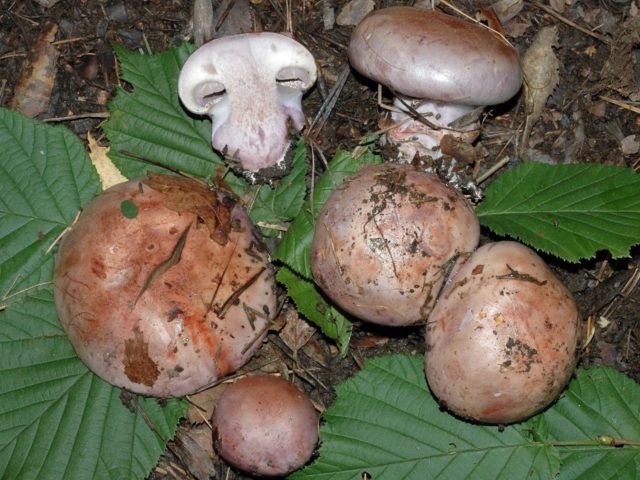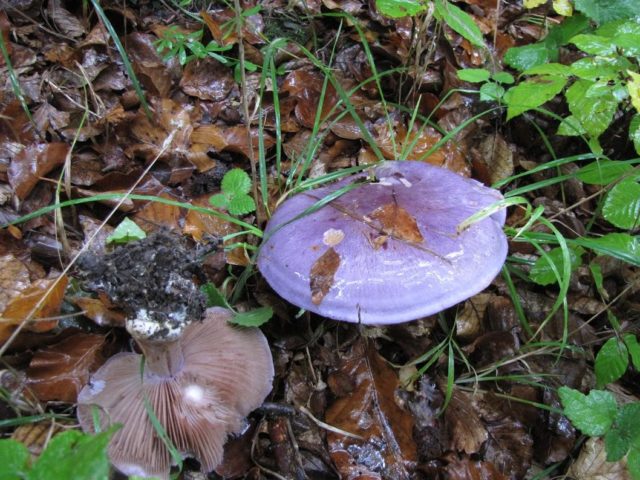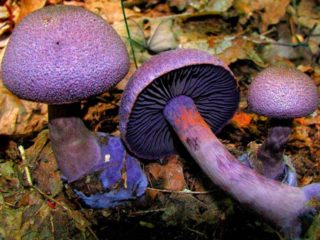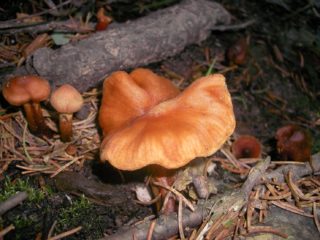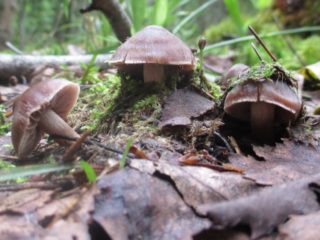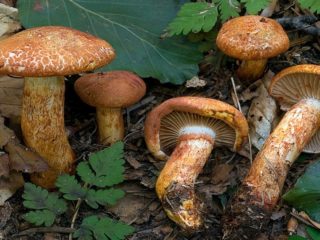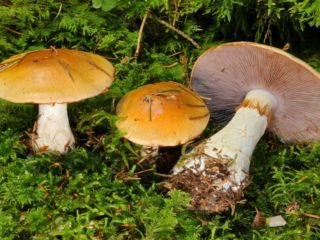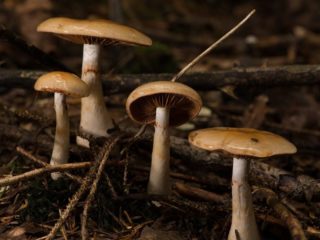Content
The scaly cobweb is a conditionally edible representative of the Cobweb family. But due to the lack of taste and weak musty aroma, it has no nutritional value. Grows among spruce and deciduous trees, in a moist place. Found singly or in small groups from August to October.
Description of the scaly web
Since the mushroom belongs to the 4th group of edibility, it is important to be able to distinguish it and know the time and place of growth. Therefore, acquaintance with the scaly spider web needs to begin with external characteristics.
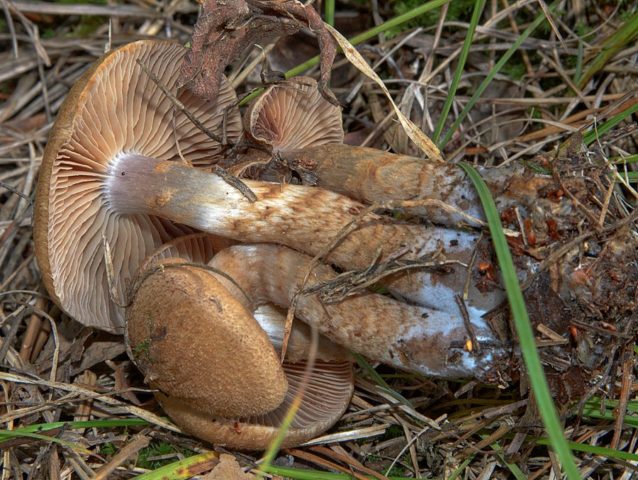
The fungus grows in damp places
Description of the cap
As it matures, the bell-shaped cap straightens and becomes flat-convex.The surface is covered with light brown or rusty brown skin with dark coffee scales. The edges are light, sometimes acquiring an olive tint.
The spore layer consists of rare, partially adherent plates, which at the initial stage of development are covered with a thin web. At the beginning they are colored light chocolate with a purple tint; as they grow, they become rusty brown. Reproduction occurs by microscopic spores that are found in a whitish powder.
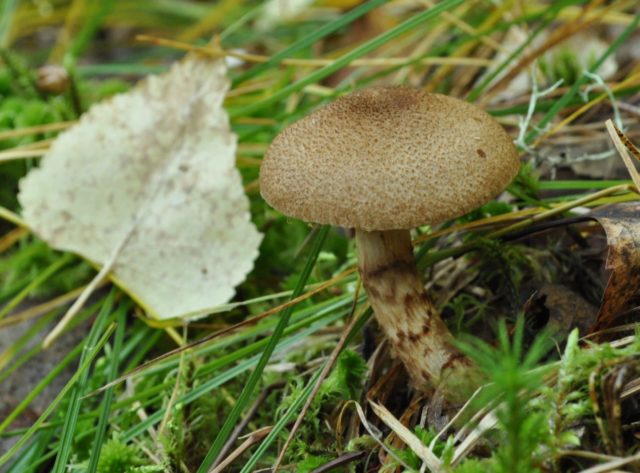
Only the caps of young mushrooms are used in cooking.
Description of the leg
The small, thin leg is club-shaped. The surface is smooth, light brown in color. Closer to the ground, the leg thickens and the color changes to dark rusty. The pulp is loose, light purple in color, tasteless, with an unpleasant musty odor.
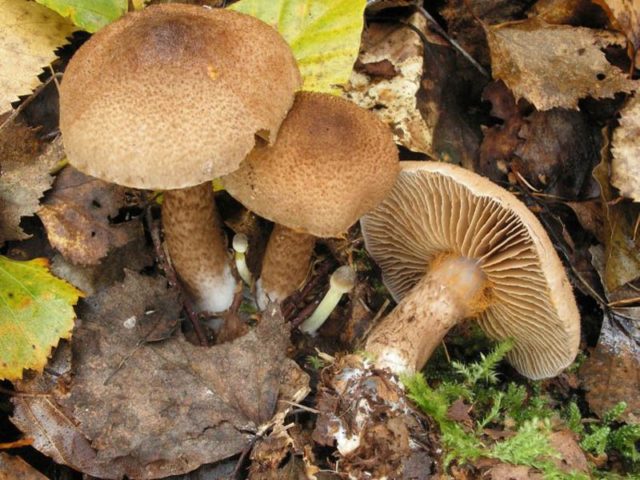
The fleshy leg has an unpleasant aroma
Where and how does it grow
This representative prefers to grow in a moist place, near water bodies, on damp moss, among spruce and deciduous trees. Grows in small families and bears fruit from August to October.
Is the mushroom edible or not?
After prolonged heat treatment, scaly cobwebs are used in cooking. From the harvested crop you can prepare fried, stewed and canned dishes. Only the caps of young specimens are used for food. Mushroom picking should be done in dry, sunny weather, in environmentally friendly places.
Doubles and their differences
The scaly web, like all inhabitants of the forest, has similar doubles. These include:
- Red-olive - a conditionally edible representative of the mushroom kingdom. The species can be recognized by its spherical or outstretched cap of lilac-purple color. The leg is fleshy, slightly purple in color. The pulp is dense, the taste is bitter.The mushroom is rare and inhabits mixed forests in small groups. Fruits throughout the warm period.
Grows in mixed forests
- Dove blue - a large, edible specimen, with a slimy cap of sky purple color. The purple, dense pulp has a bitter taste and emits an unpleasant aroma. Despite this, after prolonged boiling it is used in cooking. Rarely found, it grows in deciduous forests in numerous families.
Fruits from August to October
Conclusion
Scaly cobweb is a conditionally edible mushroom. It grows in mixed forests; the caps of young species are used in cooking. To recognize a mushroom, it is important to know a detailed description, view photos and video materials.
